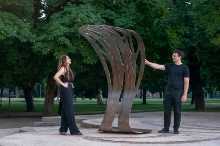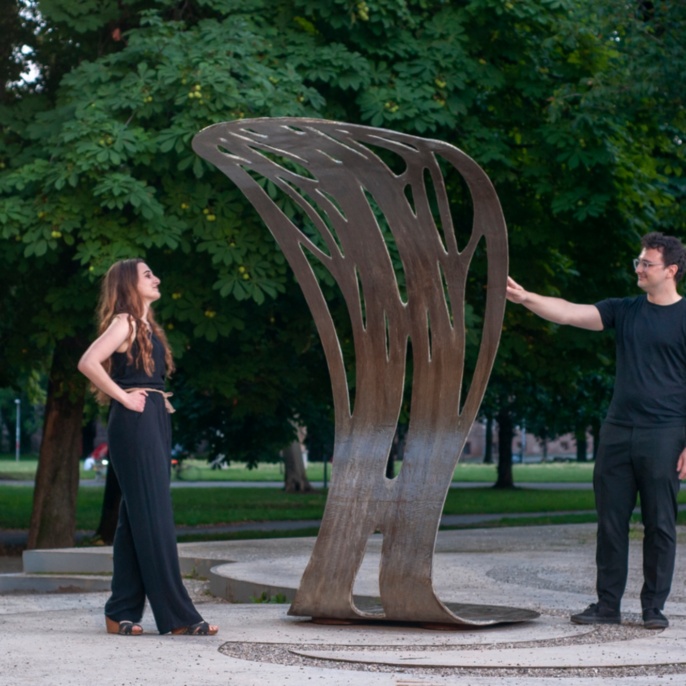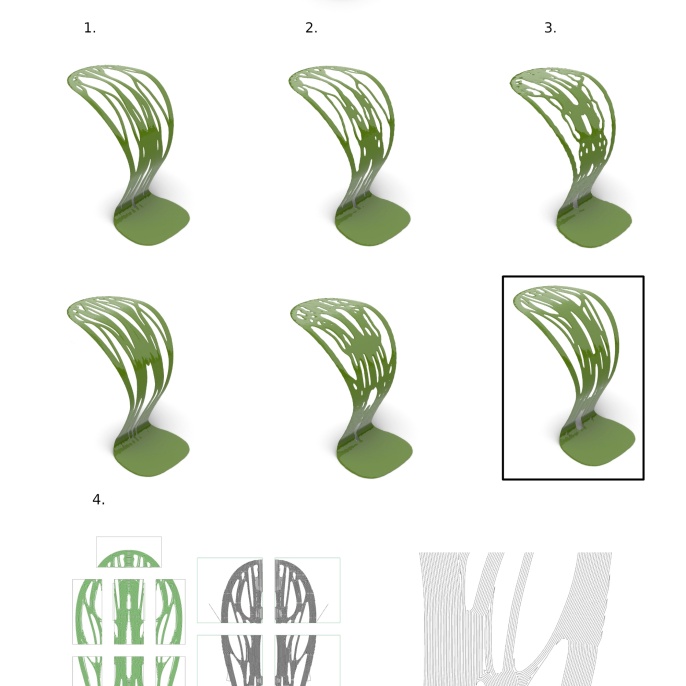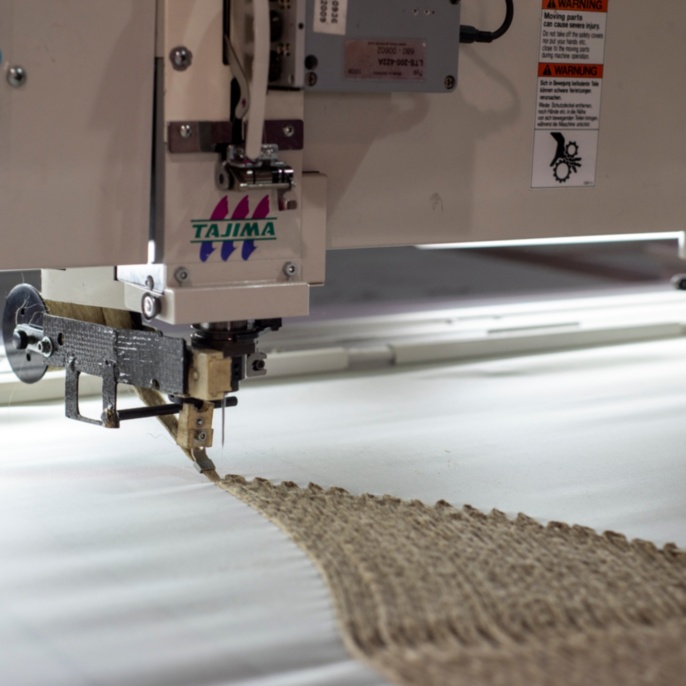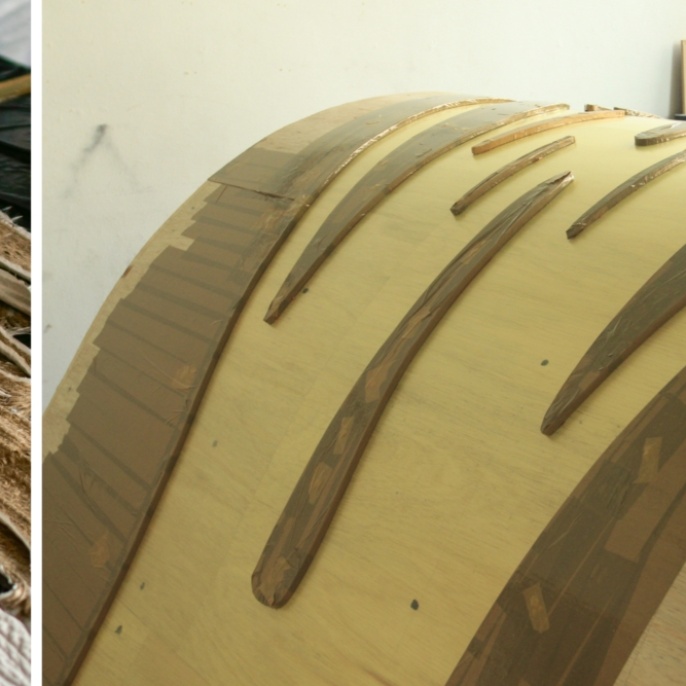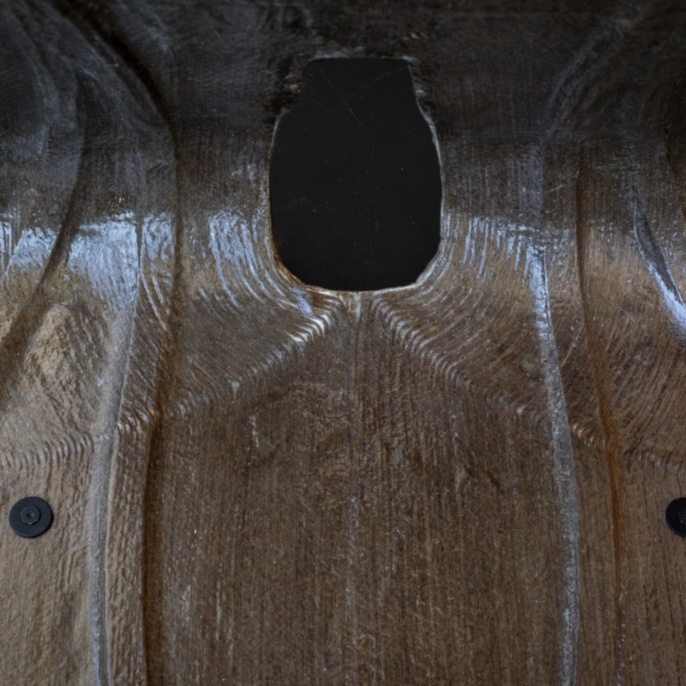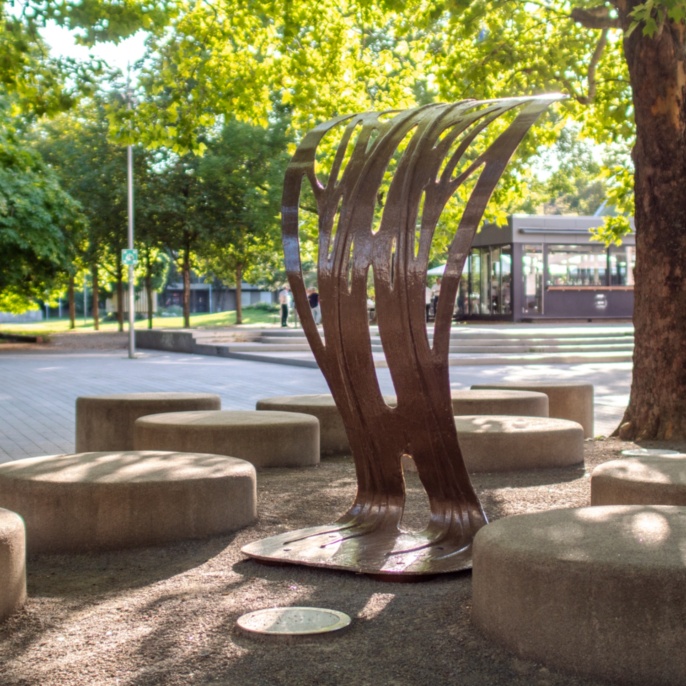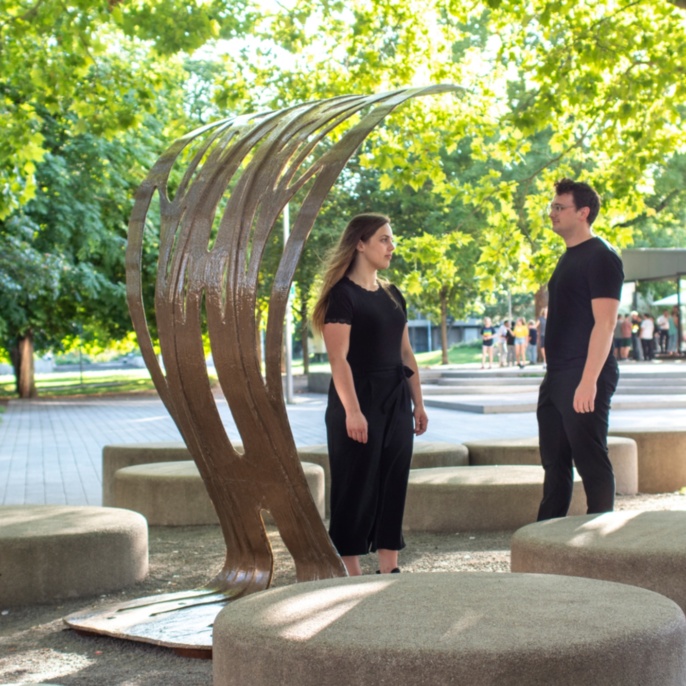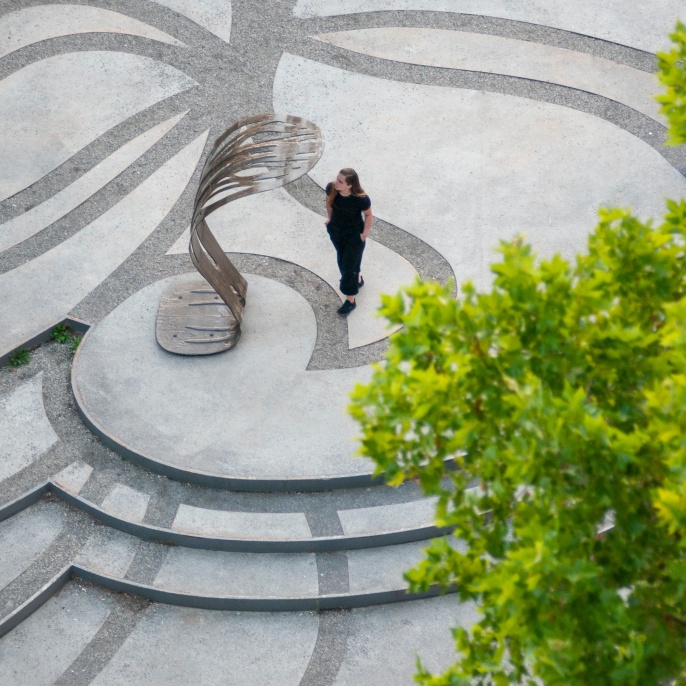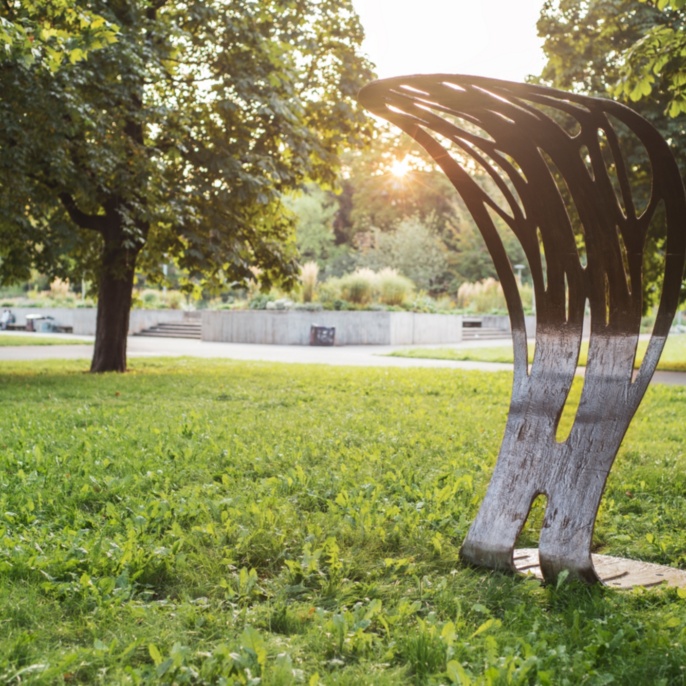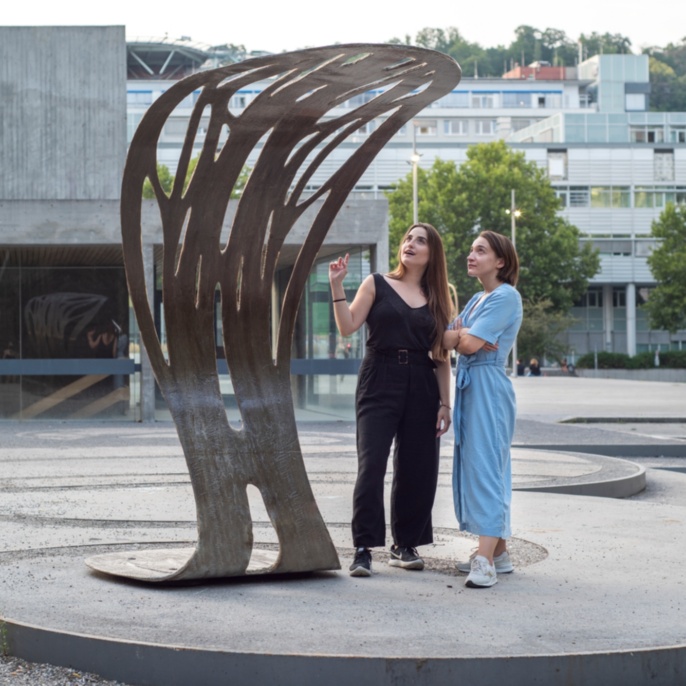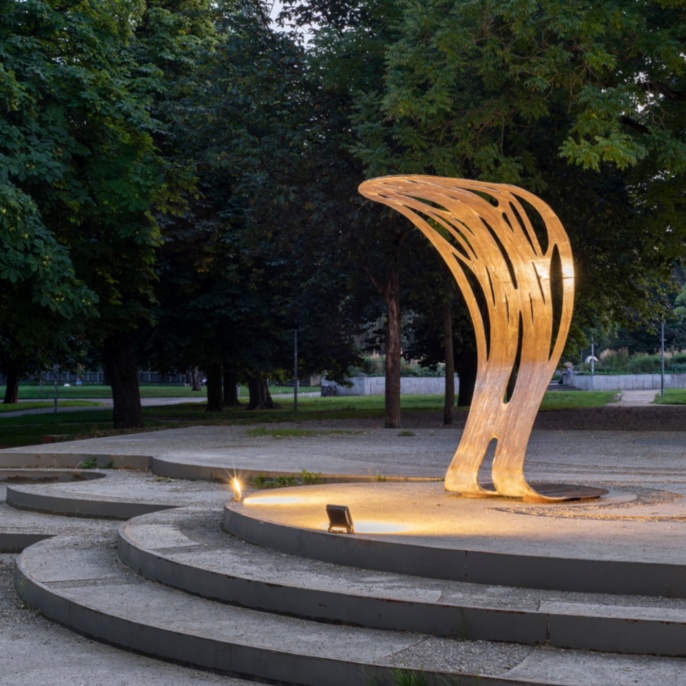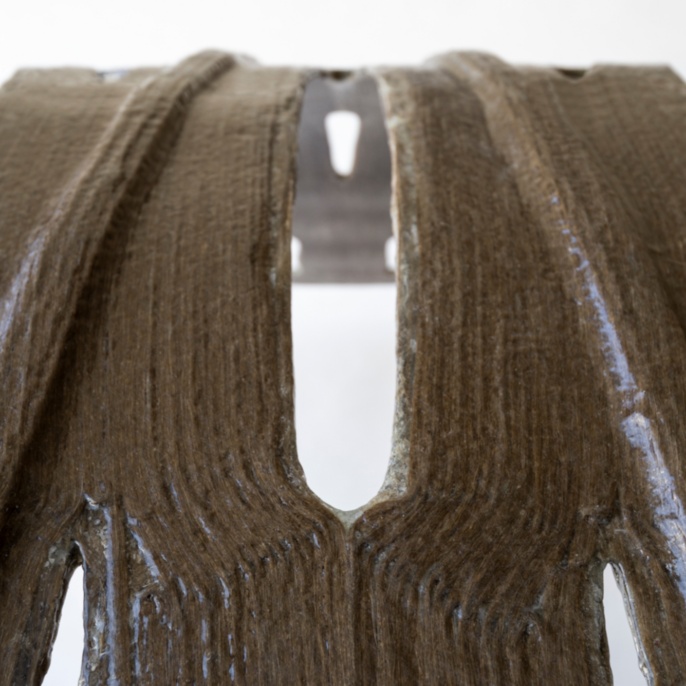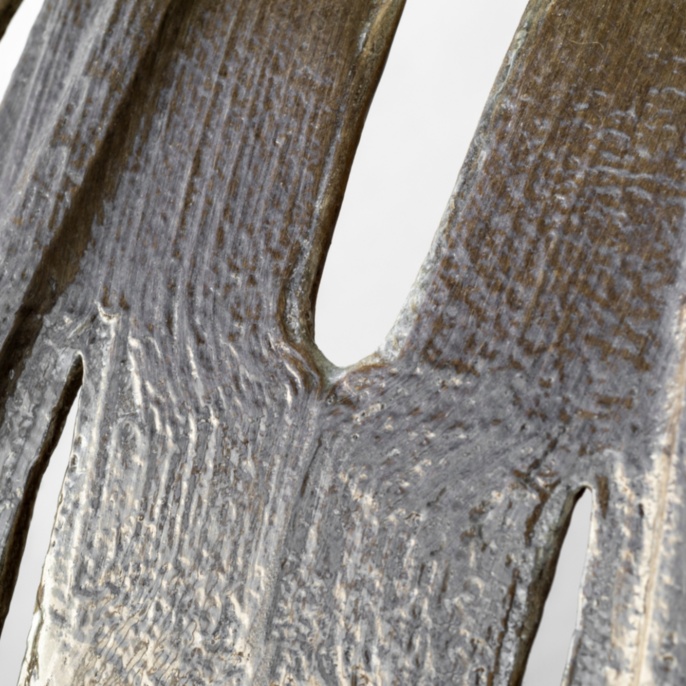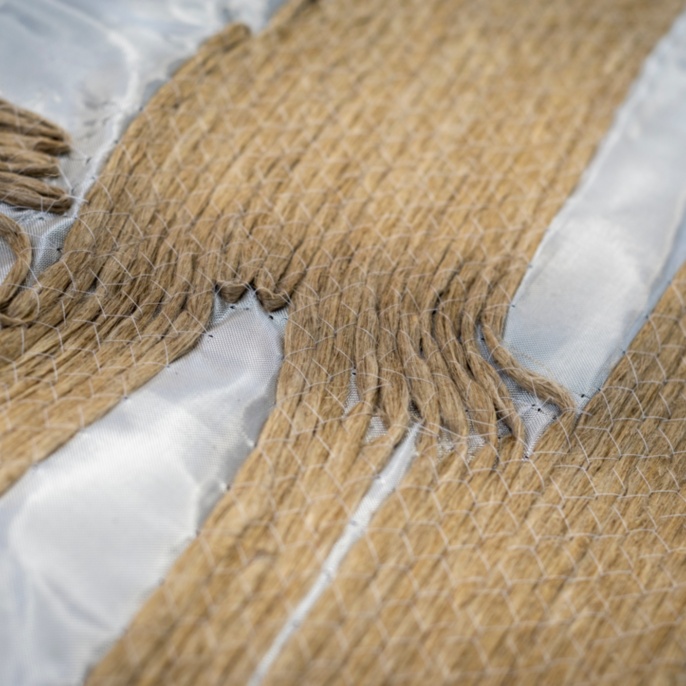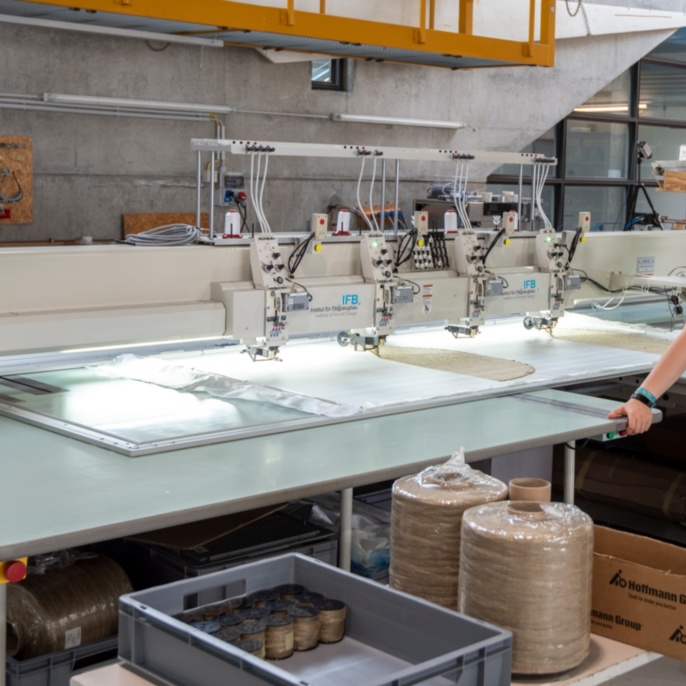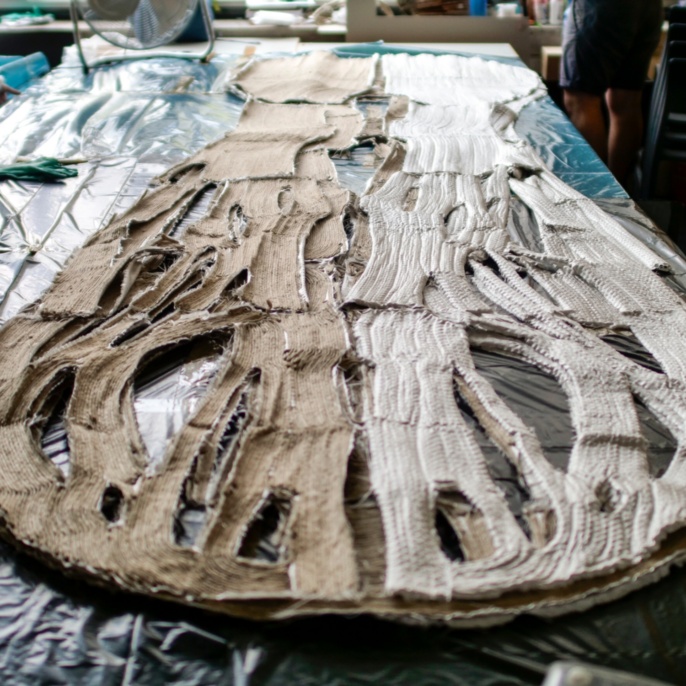Tailored Biocomposite Mock-up 2019
Tailored biocomposite Mock-up 2019 is a result of Design Studio 2019 led by the Department of Biobased Materials and Material Cycles in Architecture (BioMat), located at the Institute of Building Structures and Structural Design (ITKE) at the Faculty of Architecture and Urban Planning, University of Stuttgart. The BioMat department focuses on the application of sustainable approaches and alternative materials in architecture through architectural education based on physical prototyping. In summer semester 2019 ten bachelor architecture students supported by specialists worked together on design, testing, fabrication, and erection of small Mock-up with the use of a biocomposite from natural flax fibers. The final form is a single-curved canopy, generatively designed as a lightweight structure of 225cm high and 125cm width. The Mock-up 2019 was manufactured with continuous natural fibres using TFP (Tailored Fibre Placement) technology and molded in a closed vacuum-assisted moulding process.
Today’s building industry is one of the biggest environmental polluters. Current constructional materials and fabrication methods produce a big amount of non-recyclable waste and require a lot of energy and resources. It is no longer sustainable to continue this way, the alternative materials and fabrication methods need to be investigated. One of the alternatives to traditional materials such as steel and concrete might be biocomposites - materials in which at least one of the two main components is bio-based. Their properties allow building durable and more lightweight constructions that can reduce a negative impact on the environment coming from non-renewable materials.
For the Tailored Biocomposite Mock-Up, natural fibres were used as biodegradable and renewable substitutes for synthetic fibres. Compared to glass or carbon fibres they provide significant low density and damping as well as vibration absorption properties. For the Mock-up 2019 continuous flax fibres were selected due to their high tensile strength and availability in Central Europe.
Continuous fibres arranged in the main load direction allow to fully use its tensile strength properties. For this reason, Tailored Fibre Placement (TFP) was chosen as a fabrication method. TFP is a digitally controlled embroidery technology that enables the fabrication of complex textile preforms with power flow-oriented fibre orientation and locally adjustable fibre quantity.
For this kind of fabrication method, a 3D form of the geometry has to be unrolled to a flat surface, for which a fibre pattern is later created. According to this pattern, individual continuous fibers are then stitched to a matrix. TFP method allowed the precise fabrication of Mock-up-preforms with an accuracy of fibers up to ±0.3mm.
The Mock-up is a single-curved canopy, generatively designed as a lightweight structure of 225cm high and 125cm width. In design optimization and the form-finding process was selected form with the possible smallest deformation. With the help of computational design programs, the form was afterward topologically optimized to reduce the amount of unnecessary material and achieve optimum lightness. As the last step, fibre path was generated with the optimum smooth direction of the continuous flax fibres.
The whole process included design, testing, fabrication, and erection took four months. The final construction of the Mock-up took place at the end of June 2019 and was divided into three stages: TFP fabrication, mould preparation, and placement on the mould with vacuum assistance. TFP Preforms were fabricated in cooperation with Institute of Aircraft Design (IFB) at the University of Stuttgart, where the students were provided with expert knowledge in the field of fibre placement technologies and were able to use TFP machines.
The Mock-up structure was manufactured with six layers, including two layers of flax tapes and four layers of TFP preforms. Due to limitations of TFP machine, the four TFP layers were designed in pieces of maximal 1,00 x 1,40 m. TFP preforms overlapped each other to avoid any cracks on the edges between the preforms. For every single preform, a CAD (Computer-Aided Design) model was generated to define the tailoring path. The ready-made preforms were afterward impregnated by resin and moulded by a closed vacuum-assisted moulding process. After the structure was removed additional reinforcement by two layers of TFP preforms was applied.
The Mock-up 2019 is an example of new aesthetic architectural features of bio-based materials using digital manufacturing technologies and generative design methods. The small structure was successfully built as a single canopy without any segmentation. The fabrication method seems very feasible to produce precise shell or panel structures with controlled fibre orientation according to predominant tension forces. Thinking of our environment and the life cycles of buildings, fabrication methods, and materials used in biocomposite Mock-up 2019 might be an inspiration to use alternatives to traditional non-renewable materials predominantly used in the building industry.
Realization: 04/2019 – 08/2019
Size: 2,25 x 1.25 m (height x width)
Team
Supervisor: Jun.-Prof. Dr.-Ing. Arch. Hanaa Dahy
Tutors: Jan Petrš, Piotr Baszyński
Students SS19 (Design studio: Pavilion Design and Fabrication: Multifunctional Biocomposite Building Elements):
Aysin Can, Eirini Evangelini, Paulina Grabowska, Thomas Strasser, Ana Cervilla, Roni Rinne, Aleksandra Sygut
Fabrication:
Institute of Aircraft Design, University of Stuttgart (Faculty 06: Institute of Aircraft Design) - Prof. Dr.-Ing. Peter Middendorf, Dr. Stefan Carosella and Mr. Benjamin Wolfinger,
Topology Optimization + Structural Analysis:
Czech Technical University in Prague (CTU, Department of Mechanics, Faculty of Civil Engineering and Experimental Center, Faculty of Civil Engineering,) - Dr. Jan Novák and Mr. Marek Tyburec.
Students Scientific Assistants:
Farnaz Fattahi, Timo Sippach
Tech. Support:
Andreas Kulla, Michael Preisack, Michael Schneider, Michaela Tondera
Video:
Kristína Balušíková
Sponsors and Supporters
Groupe Depestele.
Hexion Inc.
EcoTechnilin
The project was partially supported by the Deutsche Forschungsgemeinschaft (DFG, German Research Foundation) under Germany's Excellence Strategy EXC 2120/1-390831618.
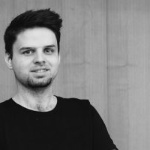
Jan Petrš
Dr. Ing. arch.Research Associate
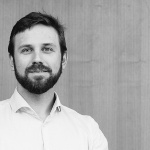
Piotr Baszyński
M.Sc.Research Associate I IntCDC


